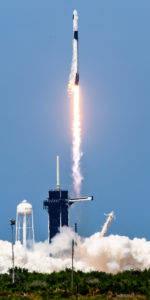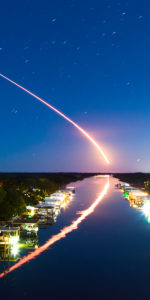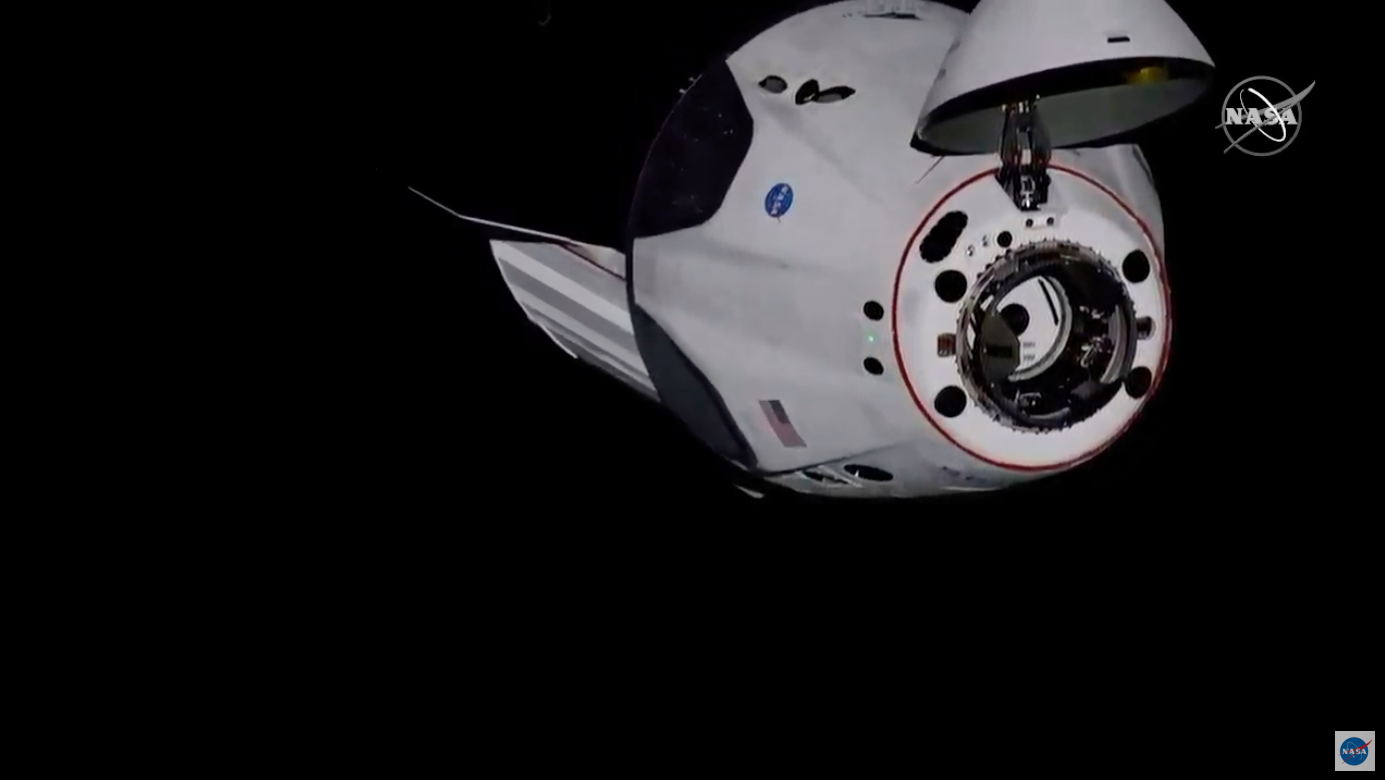
Riding aboard a spacecraft they christened “Endeavour”—in honor of the now-retired shuttle which kicked off both of their astronauting careers more than a decade ago—NASA veterans Doug Hurley and Bob Behnken completed another milestone earlier today (Sunday, 31 May), with a smooth link-up at the International Space Station (ISS) at 10:16 a.m. EDT. In doing so, the Demo-2 flight of SpaceX’s Crew Dragon became the 99th human-carrying space vehicle to visit the multi-national orbital complex since STS-88 (another Endeavour) in December 1998.
Thirty-seven U.S. shuttle missions, 61 Russian Soyuz flights, the most recent of which launched in April, and now Demo-2, have transported 240 men and women to the station from 19 sovereign nations. But for the first time on Demo-2, they were launched not by a government, but by a commercial entity.
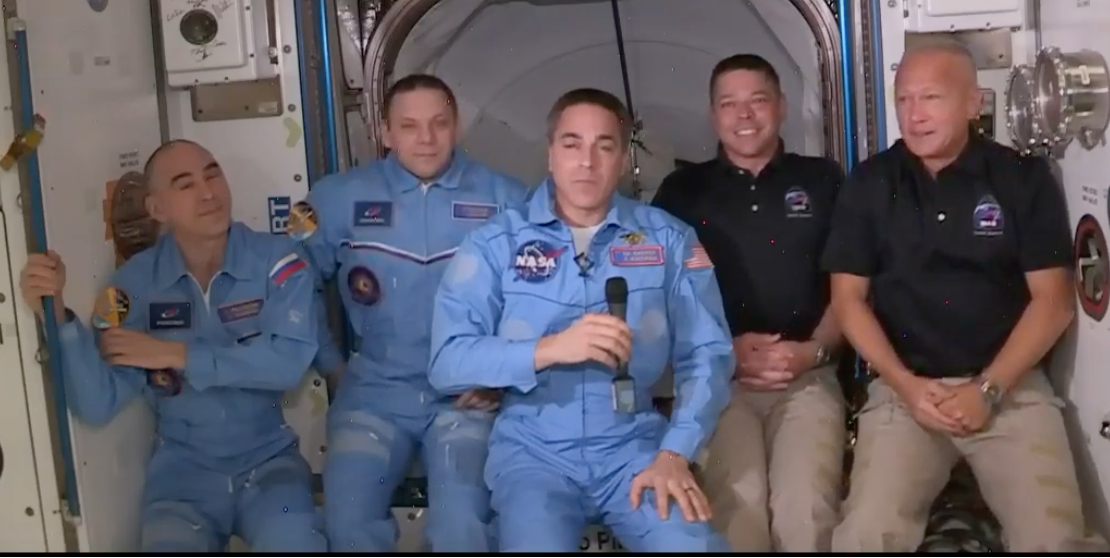
After more than a decade in development, Saturday’s successful 3:22 p.m. EDT liftoff of Demo-2 ended an almost nine-year hiatus in American capability to send its own astronauts into space, aboard its own spacecraft, atop its own rockets, and from its own soil, since the retirement of the shuttle fleet. Astonishingly, Expedition 63 Commander Chris Cassidy—the incumbent ISS skipper—managed to snap a photograph of the Falcon 9 booster on the pad just two minutes before liftoff as the station passed high above the Kennedy Space Center (KSC).
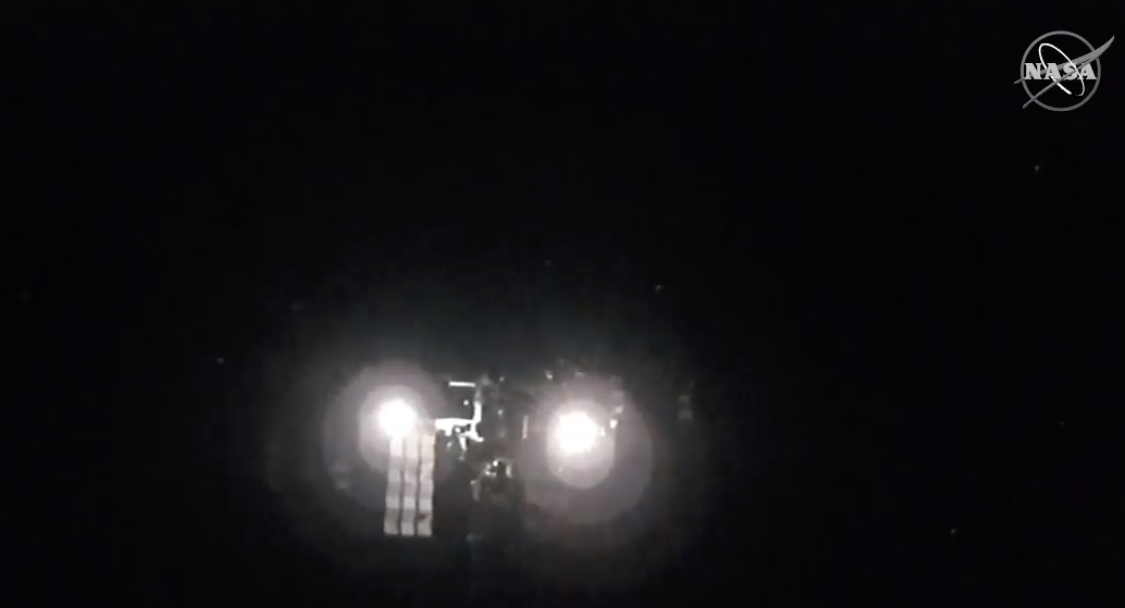
Twelve minutes after departing historic Pad 39A, the “Dragon Endeavour” separated from the second stage of its Falcon 9 booster and shortly thereafter its nose cone opened to reveal its navigation sensors and docking mechanism. Over the course of the next 19 hours, a series of five thruster “burns” were executed to gradually align the spacecraft’s orbital path with that of the ISS and Hurley briefly took control of his ship to evaluate its capabilities in a “far-field” manual mode. By Sunday morning, Dragon Endeavour was clearly visible as a steadily brightening black-and-white blob to cameras wielded by Cassidy, who had earlier radioed warm greetings to the newcomers.
Hurley and Behnken, who provided an on-orbit video tour of Dragon Endeavour a few hours after liftoff, were awakened at 4:45 a.m. EDT Sunday to the strains of Black Sabbath’s “Planet Caravan”. At 8:11 a.m. EDT, the roughly 90-second-long Approach Initiation burn was executed to bring the spacecraft within the ISS Approach Ellipsoid in order to reach Waypoint Zero, the first of three waypoints at 1,300 feet (400 meters) “below” the station. They passed smoothly through a total of three waypoints—the others were Waypoint One at 720 feet (220 meters) and Waypoint Two 66 feet (20 meters)—and Hurley took manual control of Dragon Endeavour for the second time whilst in close proximity to the ISS.
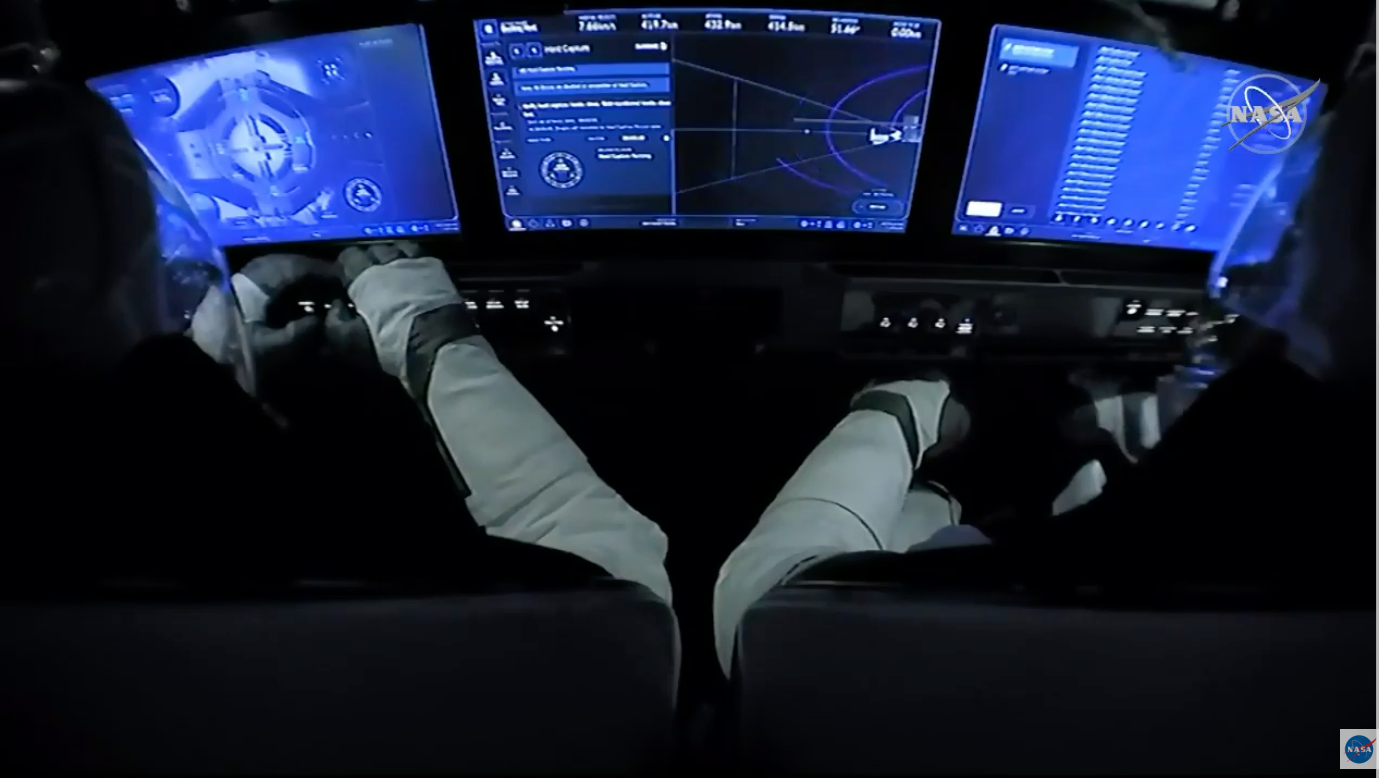
Throughout the rendezvous, the crew worked at least 16-17 minutes ahead of the timeline and it came as little surprise that docking, originally planned for 10:29 a.m. EDT, came a few minutes earlier. Reaching Waypoint Two, a hold was called for a “Go/No-Go” poll for final approach and docking. Contact and capture between Dragon Endeavour and International Docking Adapter (IDA)-2 at the forward end of the station’s Harmony node came at 10:16 a.m. EDT, as the combined vehicles flew 262 miles (421 km) over the border between China and Mongolia.
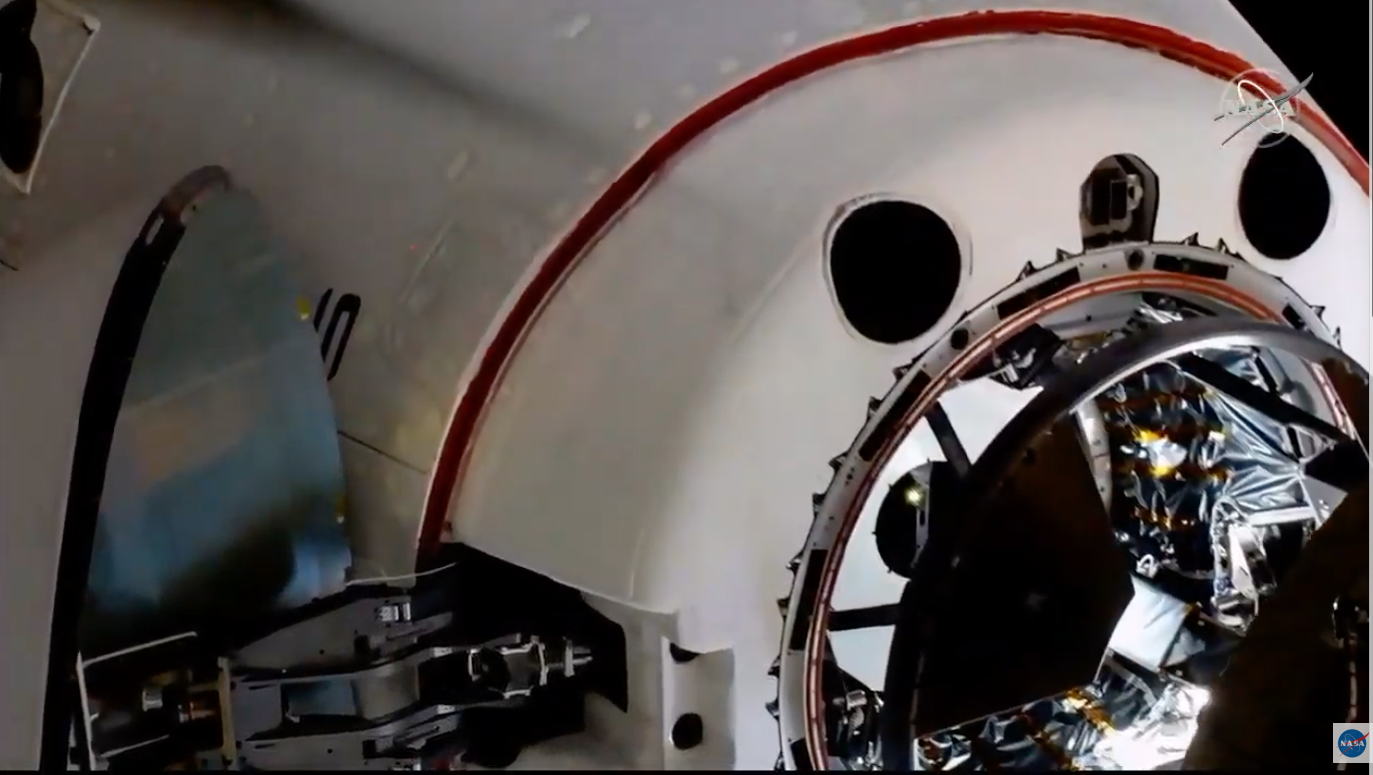
“Dragon, arriving,” exulted Cassidy, with the traditional bell-ring to observe the arrival of a new crew. “The crew of Expedition 63 in honored to welcome Dragon and the Commercial Crew Program. Bob and Doug, glad to have you as part of the crew.”
Two hours later, following pressurization and leak checks between the two spacecraft, Cassidy opened the hatch into IDA-2 at 12:37 p.m. EDT as they orbited 267 miles (430 km) over the South Pacific. And at 1:02 p.m. EDT, on the Dragon Endeavour side, Hurley opened his ship’s hatch to give American astronauts direct crew access to the ISS from an American spacecraft for the first time in almost nine years. Behnken came floating through the hatch first and was quickly engulfed in hugs from Cassidy and Russian Expedition 63 cosmonauts Anatoli Ivanishin and Ivan Vagner. Interestingly, both Cassidy and Behnken are former chiefs of NASA’s astronaut corps and today marked the first time in history that two ex-chiefs have met in low-Earth orbit.
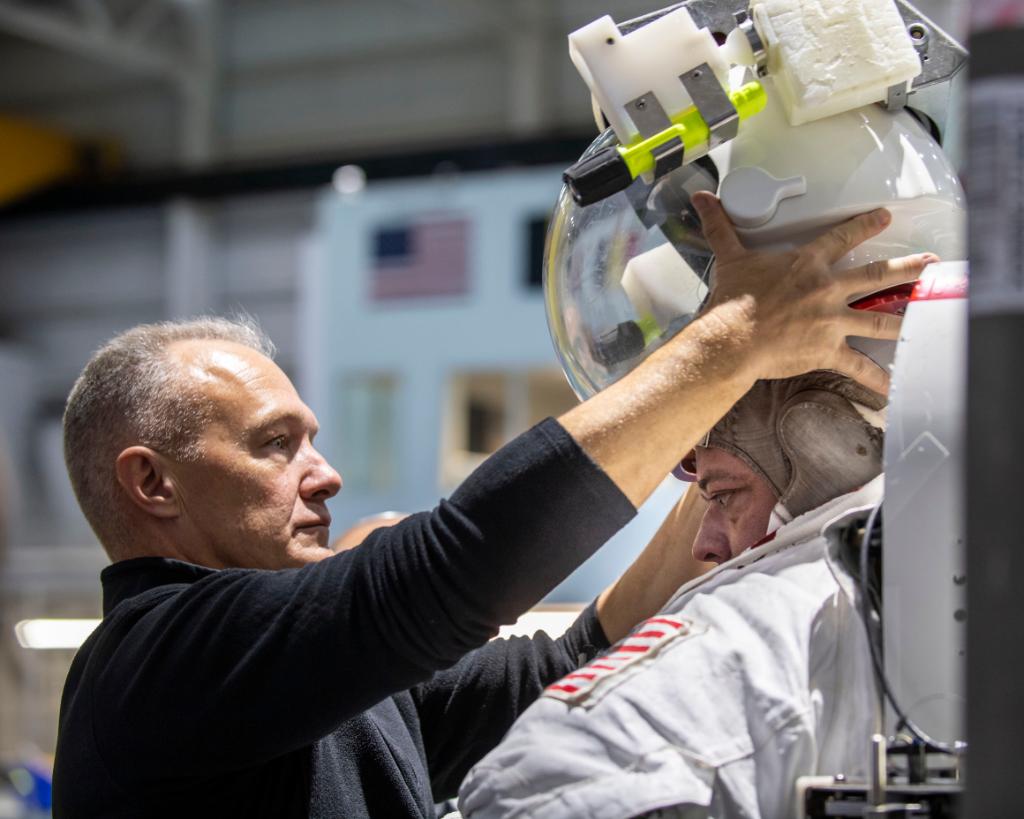
It remains to be seen exactly how long Hurley and Behnken will remain aboard the ISS, although it is understood that they will return to Earth about a month before the scheduled 30 August launch of Crew One—the first Post-Certification Mission (PCM) of Crew Dragon, carrying NASA astronauts Mike Hopkins, Victor Glover and Shannon Walker, together with Soichi Noguchi of the Japan Aerospace Exploration Agency (JAXA). That suggests an undocking and return of Dragon Endeavour in the late July timeframe, about eight weeks from now.
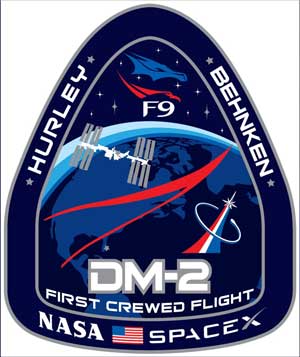
The recent arrival of Japan’s H-II Transfer Vehicle (HTV)-9 brought with it the final set of lithium-ion batteries to upgrade the space station’s S-6 truss segment from its original nickel-hydrogen batteries. A set of four spacewalks are on tap this summer to replace the batteries, together with at least one other Extravehicular Activity (EVA) to complete the installation of the Bartolomeo payloads-anchoring platform and the Columbus Ka-band Antenna (Col-KA) onto Europe’s Columbus lab. Earlier this year, following the decision to potentially extend Demo-2 from a two-week test flight to a multi-month ISS stay, Behnken received additional EVA training and Hurley received robotics training to support this work. “No formal assignment for the spacewalks have been made,” NASA’s Dan Huot told AmericaSpace early last week. “Likely would not until after the Demo-2 crew arrives.”
And whilst Hurley and Behnken will work as part of the Expedition 63 crew—and Cassidy joked that missing their original 27 May launch date meant they missed out on Saturday morning cleaning duties—they do have a number of important tests associated with Crew Dragon.
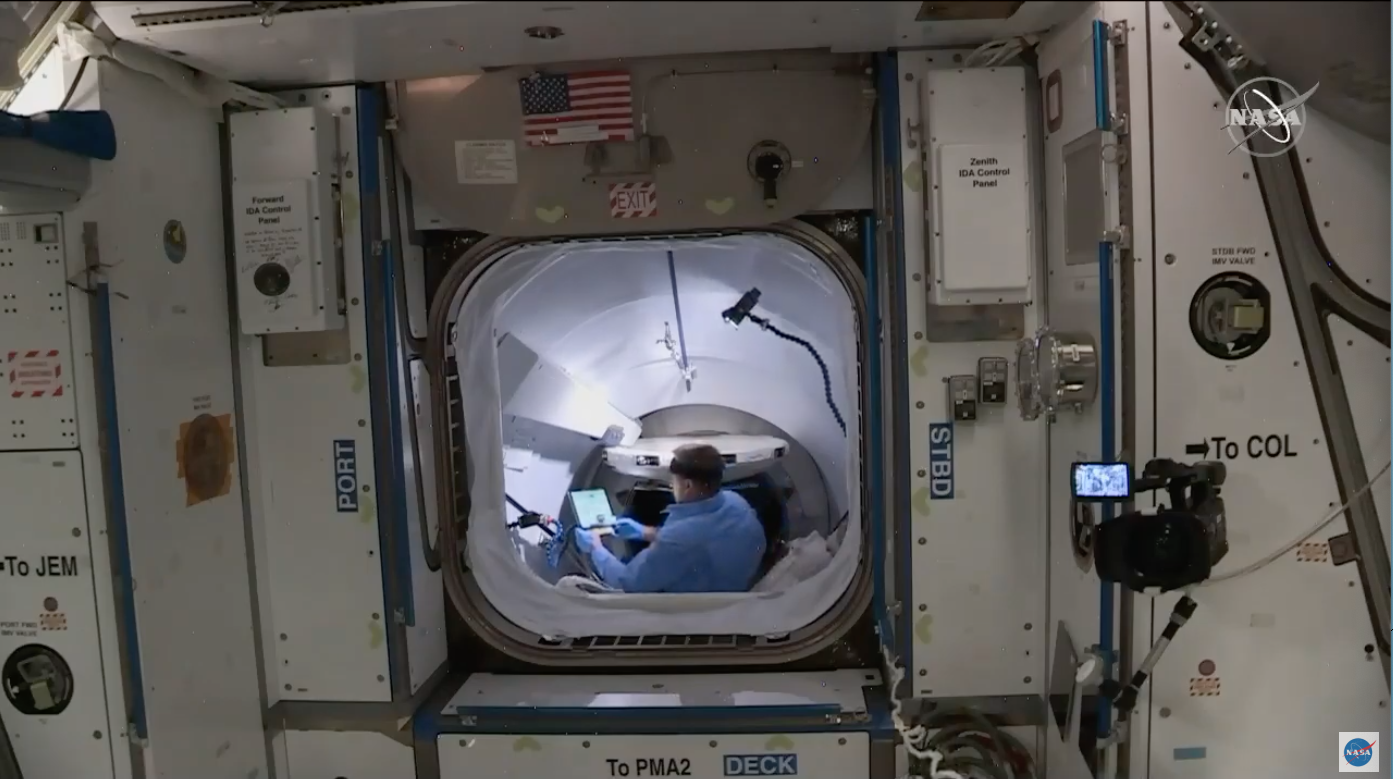
According to Mr. Huot, these tests fall into several key areas. Hurley and Behnken will periodically “reawaken” Dragon Endeavour from its quiescent mode and execute procedures to establish an emergency safe haven. As part of this end, they will evaluate and configure all emergency hardware inside the spacecraft to prepare for a fast-response safe haven if needed. They will perform docked audio evaluations to the U.S. Operational Segment (USOS) and the Russian Operational Segment (ROS), evaluate the wifi signal strength from ISS routers to determine if SpaceX and NASA devices can access wireless networks aboard Dragon Endeavour. And they will perform donning and doffing of their custom-made SpaceX pressure suits and transition to emergency masks.
Mr. Huot told AmericaSpace that these evaluations “won’t be daily” and that Dragon Endeavour “will be largely powered down once it is docked”, with an expectation that Hurley and Behnken will board their ship infrequently, at most once per week, for test work. However, it is expected that Cassidy and one or both of the cosmonauts may participate in the tests relating to the overall habitability of Crew Dragon and its functionality to support future missions of up to four astronauts. “Tests will be largely executed by Bob and Doug,” explained Mr. Huot. “Other crew will be tapped if needed.”
FOLLOW AmericaSpace on Facebook and Twitter!
Missions » ISS » CCDev » DM-2 »



